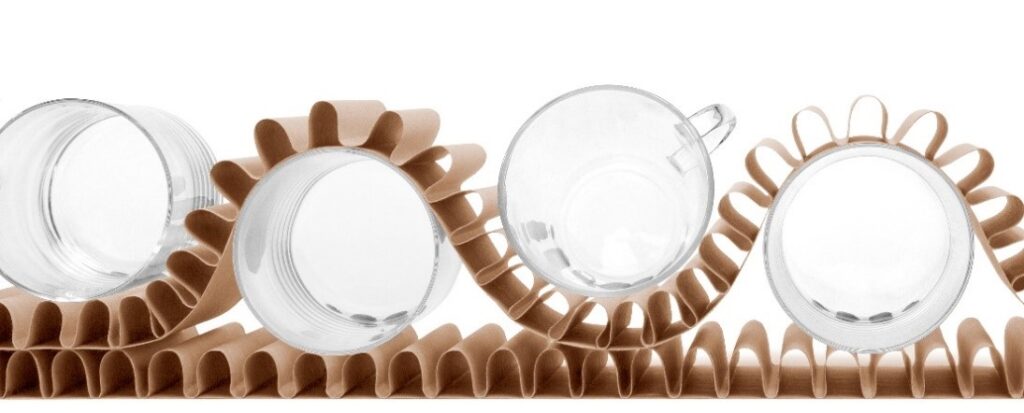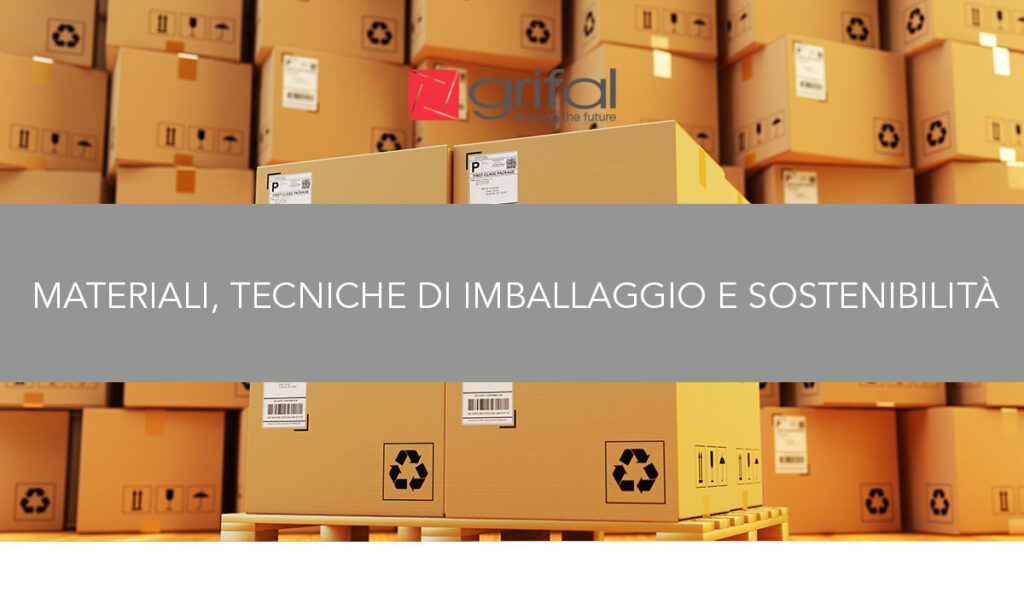We began to talk about packaging in the second half of the nineteenth century, when these solutions began to prove useful in the trade of products.
Thus it was that packaging carved out a real role for itself, presenting itself as a means of communication and sales.1
Product protection, image, and the form of outer packaging made of paper and cardboard grew in importance in the second half of the 20th century, becoming an active part of product design and marketing strategy.
Packaging allowed the future of many industries to be revolutionized, think for example of the ideal qualities for containing, protecting, preserving and transporting food.

What does the term “packaging” mean?
The term “packaging” generically refers to the process of packing a product.2
Specifically, we refer to the set of technological processes related to the conditioning of goods in order to make them suitable:
- to factory handling
- to storage
- to transportation, anticipating the possible different means and stresses
- To the use or consumption by the final customer
The packaging industry includes various types of packaging, each designed for different uses and with its own peculiarities.
- In the first analysis, ensuring safe transportation-protecting the product from possible breakage or spoilage-is a key aspect because it preserves customer satisfaction by reducing returns and consequently costs for companies.
- Second, the choice of filling material that fits inside the boxes to protect the goods must be taken with care and attention.
Primary functions of protective packaging
A protective packaging to be functional must:
- Protect the product from shock, vibration, compression and external agents (e.g., weather conditions) during transportation.
- Do not be oversized relative to the product.
- Do not unduly affect the final cost of the product.
- Promote the product: packaging communicates what it contains, can convey marketing messages, and allows product identification, including, for example, in terms of quantity, additives, how to use it, and expiration date.
To be 100 percent efficient, a package must be durable yet lightweight and easily transportable. Protective packaging can be made from a variety of materials, but these must be easily disposable and included in a circular economy and eco-sustainability framework.
The most popular fill materials
Among the main filler materials best known in the packaging market, also referred to as “internals,” we can mention:
- Polyethylene foam sheets: is a plastic material mainly used to protect and pack small and light-weight objects.
- Wrapping paper: particularly good for filling empty spaces in boxes, especially with small and medium-sized non-fragile items.
- Expanded polystyrene foam: is a ductile plastic material with low weight. It is molded for the protection of non-fragile objects.
- Bubble plastic: suitable for packing small and medium-sized non-fragile products, especially heavy items.
- Polyurethane foam: flexible, with shock-absorbing capacity. It is especially suitable for filling boxes with light products.
Combining all the properties that are useful for wrapping and separating products inside boxes with packaging that performs well and is environmentally friendly is not easy.

The real, environmentally sustainable alternative to any plastic material is cushionPaper™, which can meet the market needs of a variety of sectors, from industrial components toeCommerce to home appliances:
- made of fully recyclable and disposable paper
- arises from the need to protect, fill, lock and wrap objects
- Fits any shape, weight and size of product or box
- is a completely Made in Italy product
- the raw material used comes from responsibly and sustainably managed forests
Toward increasingly environmentally sustainable packaging
Many consortia and packaging companies are trying to find materials and production methods that are less impactful on the environment. In Grifal, sensitivity to environmental protection is certainly not lacking. In fact, we devote considerable resources to making products that meet the requirements of:
- recycling
- product reuse
- Use of the least amount of raw material possible
- use of certified and renewable raw materials
- continuous reduction of CO2 emissions
Grifal has a Design Studio that can express the state of the art for customized packaging solutions. So much so that hundreds of projects are created every year in the company to meet the needs of companies of all sizes and markets.
In fact, we have an in-house Staff that dialogues with the customer to share innovative solutions, functional and graphic customizations, and offer maximum after-sales support.
Stefano Corna is our design and R&D manager:

“The design service offered by Grifal is based on a dedicated department.
Who studies and creates customized proposals in 360 degrees,
with the goal of realizing the best packaging solutions.
In this way, the in-house team of design professionals is not limited in the relationship
Of mutual trust and satisfaction with Grifal customers.
From technical analysis to 3D simulations,
From any comparison with existing solutions
To the choice of green materials,
from the first sampling to testing and defining the optimal production processes,
meeting a wide variety of customer needs-all to ensure a competitive and professional final solution
For personalized, high-performance packaging.”
Our company has a Packaging Testing Laboratory capable of performing as many as 29 ISTA-certified standard test protocols.

